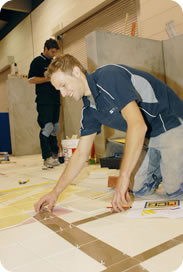Studio Session:
After spending what several weeks longer than what had been planned from the
outset, the group had finally landed on a concept. Despite being
“tutor-approved” several weeks earlier, we were realising that our project
lacked a general degree of tangibility. We were still unsure about how we would
facilitate the interaction and develop a product, even though we believed we
had nailed and thoroughly understood the context or scenario behind our
project.
At this point, further design and development of this idea would prove fruitless. The design team believed it was in best interests of the project to issue a “design freeze”. We are locking in our elements and are to begin final concepts for our interaction. \
At this point, further design and development of this idea would prove fruitless. The design team believed it was in best interests of the project to issue a “design freeze”. We are locking in our elements and are to begin final concepts for our interaction. \
Product:
At this point, the group have locked in the “scenario element” of our design project. The scenario is still floor tilers with particularly aim to prevent the injury of workers. The reason this is a solid concept, will be further explained later in this blog post.
At this point, the group have locked in the “scenario element” of our design project. The scenario is still floor tilers with particularly aim to prevent the injury of workers. The reason this is a solid concept, will be further explained later in this blog post.
USER TESTING AND RESEACH:
The Reason This Concept Works:
From what the group have discovered across research which
included interviews and studies into the ways of floor tilers, the way they
work and they way they interact with in the environment and tools around them.
The Previous video clearly demonstrates the importance of
our potential product. The tiler is seen adjusting between tools, both electric
and manual, changing stances and moving through a variety of situations that
use different cognitive, physical and emotional abilities. This dynamic context
offers a variety of interactions, which our product must understand, and adapt
to. This is what I personally believe is the key to Interaction Design. We
understand the user, understand the behaviour, design a product that fits into
the the surrounding behaviour/context and exploit this to design an Intuitive,
Interactive Product.
Obviously, the video is set and filmed in a controlled environment. The video itself also doesn’t show a crucial part of the floor tiling process, a process we also hope to investigate. This deconstruction period is the cause of many injuries through tiling.
-----
Group: Tool Analysis (Obervation and User Study)
As the group broke up for individual work, we believe we need undertake research particularly into
fabrication tools as used by floor tilers.
The following pictures show the variety of tools that group members looked at. These were done to try and develop some interesting insights. The tools investigated were deliberately diverse, some coming from outside the tiling/floor preparation professions. It was hoped at the time that this would help us innovate.
The following pictures show the variety of tools that group members looked at. These were done to try and develop some interesting insights. The tools investigated were deliberately diverse, some coming from outside the tiling/floor preparation professions. It was hoped at the time that this would help us innovate.









No comments:
Post a Comment